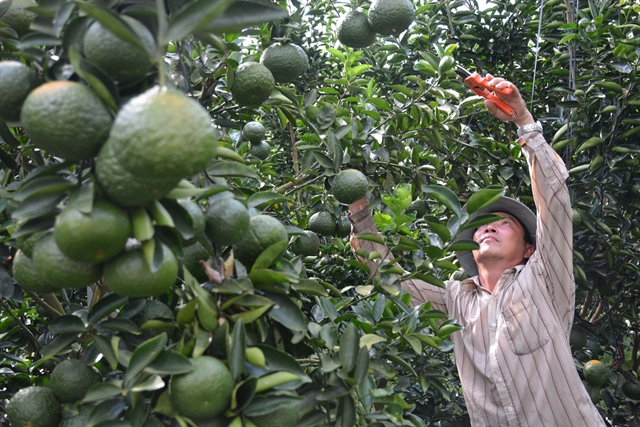 Society
Society

The Cửu Long (Mekong) Delta province of An Giang will spend more than VNĐ30.5 billion (US$1.3 million) this year to implement projects under the National Target Programme on Sustainable Poverty Reduction.

|
| A king – orange orchard in An Giang Province’s Tri Tôn District. Poverty-reduction models such as growing crops and fruits and breeding animals have helped local households escape poverty in recent years. – VNA/VNS Photo Công Mạo |
AN GIANG – The Cửu Long (Mekong) Delta province of An Giang will spend more than VNĐ30.5 billion (US$1.3 million) this year to implement projects under the National Target Programme on Sustainable Poverty Reduction.
Poor households will receive support to pursue agricultural production or business, while poverty-reduction models will be expanded in border communes, according to the province's Department of Labour, Invalids and Social Affairs.
Media campaigns raising public awareness about poverty reduction will also be launched, and officials will learn how to better evaluate poverty reduction efforts.
In An Giang, poor and near-poor households live mostly in mountainous or remote areas and in ethnic-minority dominated areas.
The province in recent years has implemented various measures to help poor households escape poverty. Its Fund for the Poor mobilised more than VNĐ948 billion ($40.8 million) from various sources over the past five years.
Last year, the province provided soft loans worth more than VNĐ900 billion ($38.8 million) to 2,400 poor households, 7,300 near-poor households, and 3,900 newly escaped poor households.
The province provided free health insurance cards for poor and near-poor households, and reduced and exempted school fees for children of poor and near-poor households last year.
It also invested in 75 infrastructure projects worth VNĐ26 billion ($1.1 million) in highly disadvantaged communes and border communes last year.
Last year it expanded five poverty-reduction models under the National Target Programme on Sustainable Poverty Reduction for 120 poor and near-poor households in highly disadvantaged communes and border communes.
The province also helped poor and near-poor households diversify their livelihoods, and expanded another 17 poverty-reduction models not under the National Target Programme on Sustainable Poverty Reduction to 417 poor and near-poor households last year.
The poverty-reduction models include breeding animals, growing short term crops, and making handicraft products.
More than 80 per cent of households applying poverty-reduction models escaped poor or near-poor status over the past five years.
Around 4,000 poor households escaped poverty last year. The province now has 10,200 poor households, accounting for 1.9 per cent of the province’s total households.
Though the province has achieved positive results, some poor households have waited for assistance from the State and community even after receiving vocational training, jobs and soft loans for doing business, according to the province’s Department of Labour, Invalids and Social Affairs.
Châu Văn Ly, director of the department, said: “The province will strengthen communication with poor people to understand their wishes and have measures to help them do production or business to improve their income and life.”
It will also help more poor households access soft loans for doing production or business, provide vocational skills and jobs for the poor, and create favourable conditions for the poor to escape poverty on a sustainable basis.
The province will set up a criteria system to monitor and evaluate poverty-reduction work at all levels, especially in districts and communes. – VNS




